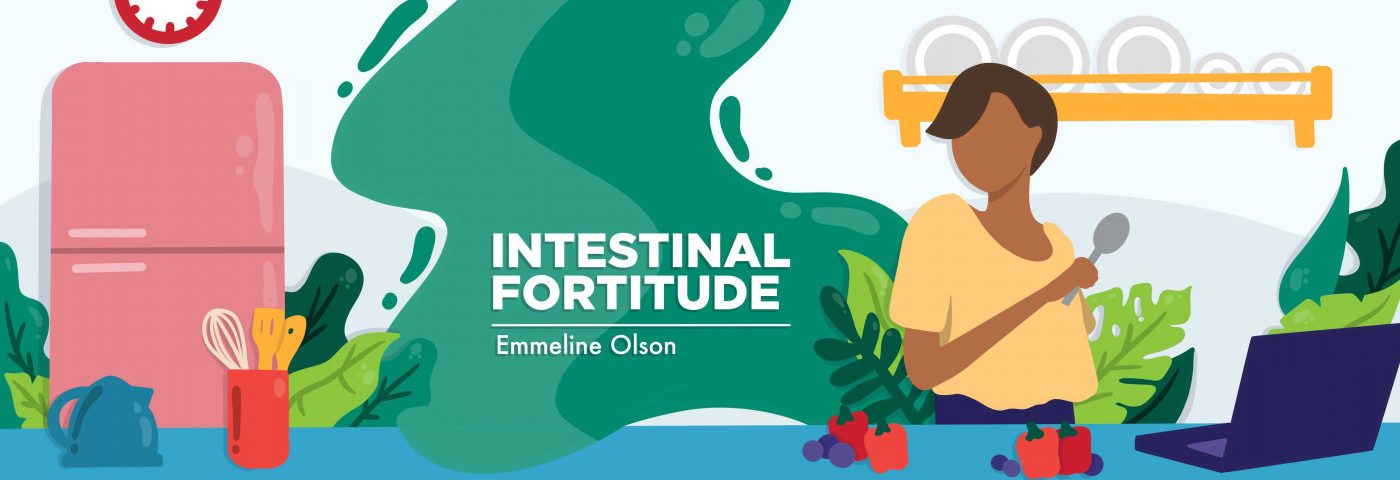I was 5 when the movie “Jaws 2” was released. My parents didn’t take me to it because it was R-rated, but they couldn’t protect me from the television commercials. I’d hear the notorious two-note theme song and bury my face in the sofa, my heart beating to the quickening crescendo.
The iconic image of the great white shark’s gaping jaw became burned into my brain. Almost 45 years later, I can’t see a shark without slamming shut the book or magazine or frantically changing the TV channel. My shark phobia was so absurd, it affected my bathroom habits.
The entire time the movie was out, I couldn’t go to the bathroom without my older sister standing guard. Sitting on the toilet, all I pictured was the great white coming up through the plumbing and biting my butt.
I can laugh about it now, but I admit I still get the heebie-jeebies using the restroom immediately after seeing a shark. While I don’t have to worry about a restroom shark attack, bathroom phobia is real and not a laughing matter, especially for inflammatory bowel disease (IBD) patients.
Parcopresis, or shy bowel syndrome
The fear of using the restroom around other people, especially in public, is an actual psychological condition. Parcopresis, or shy bowel syndrome, is the inability to defecate in public. The American Psychiatric Association doesn’t recognize parcopresis as a social anxiety disorder, but it does classify paruresis, or shy bladder syndrome, as one. Between 2.8% and 16.4% of individuals have paruresis.
Research is lacking for parcopresis. However, a 2011 case study discussed how a 23-year-old man experienced anxiety when faced with using a restroom in the presence of others, both in public and at home. By taking an antidepressant and undergoing cognitive behavioral therapy, his parcopresis waned.
In a more recent case study, a 31-year-old man became so anxious that others would hear him urinate or defecate that he would restrict food and drink intake to avoid using a public restroom. Through cognitive behavioral therapy, the man learned relaxation and stress management techniques and how to reframe his negative views of restroom sounds and smells so that he was no longer embarrassed or ashamed of his bodily functions.
Even before I had Crohn’s, I avoided relieving my bowels in public restrooms. I became more self-conscious after my diagnosis. Learning about parcopresis, I wondered how much of my discomfort was psychological versus gastrointestinal.
Determining my fear factor
Waiting until I’m home to use the toilet isn’t easy, especially when I’m having a flare. I can’t relax or do my business unless I have privacy. Finding an unoccupied restroom calls for strategic maneuvers. When I worked at an office, I often used a restroom on a different floor. Now, I look for one with less traffic. If I discover one or more stalls are already occupied, I pretend I only need to wash my hands. I then leave and return after everyone else has gone. When I can’t control my intestinal rumblings, I’ll go ahead and take a seat just in case I’m unable to hold it. Otherwise, I’ll wait quietly for everyone to leave.
Nothing is worse than when someone comes in midway through. My body tenses and I pause. I won’t continue until the door shuts behind them. If the person in the next stall is in the same predicament, we find ourselves in a standoff. We sit in uncomfortable silence, waiting for the other to surrender and walk away. If one of us pulls the trigger, it might turn into a competition like in the movie “Harold & Kumar Go to White Castle.”
To discover the severity of my bathroom anxiety, I took a short online assessment at the Mind Over Gut website. The quiz assesses restroom anxiety based on the Shy Bladder and Bowel Syndrome Scale (SBBS) and the Bladder and Bowel Incontinence Phobia Severity Scale (BBIPSS) developed by psychogastroenterology expert Dr. Simon Knowles and his colleagues.
The SBSS determines the severity of paruresis and parcopresis. The BBIPSS measures an individual’s fear of incontinence.
With a score of 19/32, I have low to mild shy bowel syndrome. My fear of bowel incontinence is also low to mild, with a score of 19/28.

My low scores might indicate that I’ve had Crohn’s so long that I’ve accepted I don’t always have a choice where or when I go, or that I’ve developed successful tactics to avoid public situations.
Mental health and IBD
Although anyone can suffer from toilet anxiety and fear, IBD can intensify these feelings. Conversely, with the brain-gut connection, a patient’s mental health can worsen their gastrointestinal symptoms. Determining if a patient has parcopresis and understanding their restroom anxiety level might help doctors determine the best treatment for their psychological symptoms, as well as their IBD symptoms.
***
Note: IBD News Today is strictly a news and information website about the disease. It does not provide medical advice, diagnosis, or treatment. This content is not intended to be a substitute for professional medical advice, diagnosis, or treatment. Always seek the advice of your physician or other qualified health providers with any questions you may have regarding a medical condition. Never disregard professional medical advice or delay in seeking it because of something you have read on this website. The opinions expressed in this column are not those of IBD News Today, or its parent company, BioNews, and are intended to spark discussion about issues pertaining to IBD.


